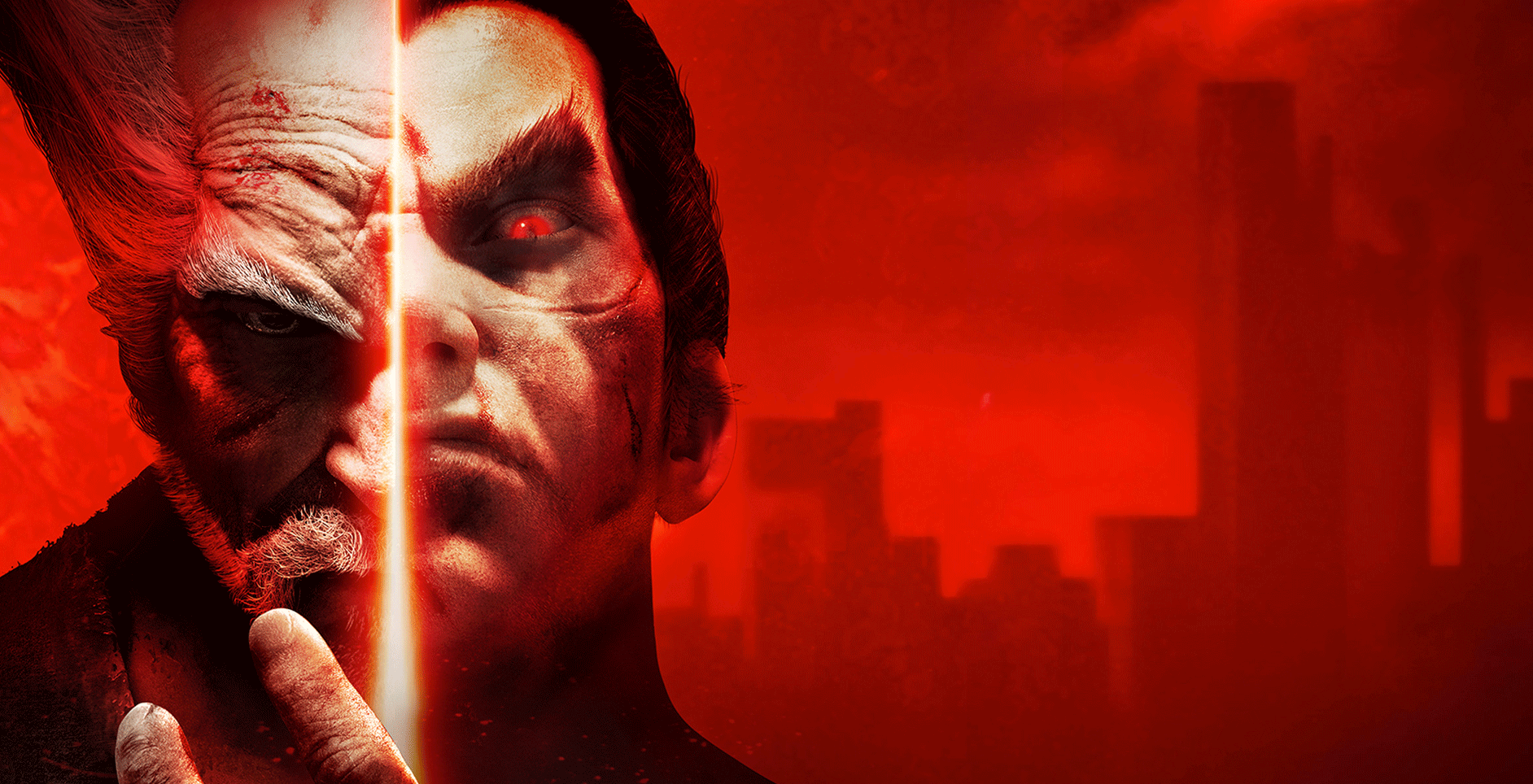What do you get when you cross a strong, stubborn old father and an angry, vengeful son with the powers of a devil? The answer is a grudge match that has spanned over twenty years, and been the main driving point of Tekken’s story. Picking up from where Tekken 6 left off, the world is in tatters after Jin Kazama took control of his grandfather Heihachi Mishima’s empire, the Mishima Zaibatsu, and used it to wage a global war against rival firm G Corporation. Jin thereafter goes missing after defeating the hellish demon Azazel and ‘saving’ the world, leaving the Mishima Zaibatsu under Nina Williams’ control.
Heihachi Mishima seemingly returns from being dead to reassume control of his empire and uses it to wage war against Kazuya Mishima; his Devil Gene-powered son who secretly pulls the strings of G Corporation from the shadows. Seeking to rebuild the Mishima Zaibatsu empire and rid the world of Kazuya’s presence, Heihachi uses his power to take down G Corporation, until he is attacked by a mysterious assailant (Street Fighter’s Akuma making a cameo in the Tekken storyline) who seeks to rid the world of both he and Kazuya. Despite being ‘killed’ yet again, Heihachi returns to face Kazuya in the fight that will determine their fates once and for all. Who will win?
 After spending two years in arcades, Tekken 7 finally comes to home consoles and for the first time in the series makes a PC appearance as well. Building off the engine of Tekken 6, the gameplay receives several tweaks from previous instalments – the most notable being a tweak to the ‘Bound’ mechanic, which would have characters bouncing back up allowing opponents to continue combos by juggling. This balances out gameplay a little more as, while still giving opponents the ability to juggle, it prevents bounds from occurring in combos which cause them to end quicker. Of course the replacement to the bound is the ‘Screw’ mechanic, which forces airborne opponents to spin and land with their legs pointing vertically. This still gives opponents the ability to juggle a combo, but can only be used once per combo, and prevents opponents from performing a tech roll and getting up quickly.
After spending two years in arcades, Tekken 7 finally comes to home consoles and for the first time in the series makes a PC appearance as well. Building off the engine of Tekken 6, the gameplay receives several tweaks from previous instalments – the most notable being a tweak to the ‘Bound’ mechanic, which would have characters bouncing back up allowing opponents to continue combos by juggling. This balances out gameplay a little more as, while still giving opponents the ability to juggle, it prevents bounds from occurring in combos which cause them to end quicker. Of course the replacement to the bound is the ‘Screw’ mechanic, which forces airborne opponents to spin and land with their legs pointing vertically. This still gives opponents the ability to juggle a combo, but can only be used once per combo, and prevents opponents from performing a tech roll and getting up quickly.
Another interesting (and welcomed) mechanic is the ‘Power Crush’ – strong attacks that, when performed, will continue through mid or high attacks and still hit opponents despite taking damage. This in some cases can even the playing field, sacrificing health in order to knock down an opponent. Following on from Tekken 6, the last-ditch Rage Mode feature has been retained but now offers a new function in ‘Rage Arts’, where a player can activate their entire Rage function and perform a massive damage combo (usually equivalent to 30% of the opponent’s health) and when enacted take the game into a momentary cinematic string of attacks. A secondary feature is the ‘Rage Drive’ mode, which also sacrifices Rage Mode but allows a more powerful combo to be performed, but is not cinematic.

Tekken 7 sees a departure from several fan-favourite characters such as Lei Wulong, Bruce Irvin, Anna Williams and even more recent additions in Zafina, Craig Marduk and Raven. Instead we are given new characters, some which represent their country for the first time in the franchise. For example, countries such as Italy, Saudi Arabia and the Philippines are represented by Claudio Serafino, Shaheen and Josie Rizal respectively; Kazumi Mishima is added for narrative purposes and Akuma crosses franchises from Street Fighter to take part in the battle. Some characters share similar traits to missing charaters; for instance, Gigas’s moveset is quite similar to Craig Marduk, and Master Raven takes the place of Raven. Mainstays of the series including Paul Phoenix, Marshall Law, Nina Williams and King return, and the game is set for DLC characters in the future with Eliza (Tekken Revolution) being available to pre-order customers.
Having played Tekken for so long, I was a little upset to see some of my favourite modes missing – Survival Mode and Team Battle mode being the two biggest omissions. While Story Mode is entertaining it only ends up being one match per character (besides the main story); Arcade Mode is shorter than it used to be, and the only way to get any extended fighting time against the CPU is by playing Treasure Fight mode.

Tekken 7’s soundtrack is great, and rarely do Bandai Namco change the voices unless they have to. Familiarity with characters isn’t just limited to movesets. The option to replace the Tekken 7 OST with classic Tekken OSTs is cool, but the fact that the songs shift randomly and play at strange times (fighting with the Tekken 2 Character Select song is weird) was a little odd and out of place.



